The Confessions of a Caricaturist, Vol. 1, Harry Furniss [digital book reader txt] 📗
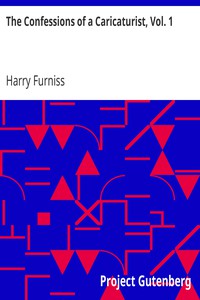
- Author: Harry Furniss
Book online «The Confessions of a Caricaturist, Vol. 1, Harry Furniss [digital book reader txt] 📗». Author Harry Furniss
 LEWIS CARROLL'S NOTE TO ME FOR A PATHETIC PICTURE. religious thought—is perfect. I am therefore to go to Eastbourne to see and study the face of Miss Matilda Smith, in a pastry-cook's shop, for the eyes. I am to visit Eastbourne and eat buns and cakes, gazing the while into the beauteous eyes of Miss Smith. Then in Glasgow there is a Miss O'Grady, "with oh, such a perfect nose! Could I run up to Scotland to make a sketch of it?" A letter of introduction is enclosed, and, as a precaution, I am enjoined that I "must not mind her squint." But I do mind, and I am sure the blemish would sadly mar my proper judgment of the lovely feature for gazing on which those eyes have lost their rectitude. For the ears a journey to Brighton to see Miss Robinson, the Vicar's daughter, is recommended. No, she may listen, think I, to the "sad sea-waves," or to her father's sermons, but never to any flattery from me. The mouth I shall find in Cardiff—not an English or Welsh mouth, but a sweet Spaniard's Se�ora Niccolomino, the daughter of a merchant there. In imagination I picture that cigarette held so lovingly in those [Pg 109] perfect lips. But I am to draw an English heroine of fifteen innocent summers—how those curly wreaths of pearly smoke would disenchant my mind of the spell of youth and innocence! For the hair I must go to Brighton; for the figure to a number of different places. In fact, my author had mapped out a complete tour for me. Had he never heard the old story of the artist who was determined to paint a perfectly correct figure, strictly in accordance with the orthodox rules of art? As he painted a portion he covered it up, and so went on until the figure was complete. When it was finished he tore off the covering. The result was hideous! He went mad! I feel sure that fate would have been mine had I attempted to carry out Lewis Carroll's instructions. I therefore worked on my own lines with success. As his biographer states: "Meanwhile, with much interchange of correspondence between author and artist, the pictures for the new fairy tale, 'Sylvie and Bruno,' were being gradually evolved. Each of them was subjected by Lewis Carroll to the most minute criticism—hypercriticism, perhaps, occasionally." Still he was enthusiastic in his praise, and absurdly generous in his thanks. He was jealous that I would not disclose to him who my model was for Sylvie. When dining with us many a smile played over the features of my children when he cross-questioned me on this point. Repeatedly he wrote to me: "How old is your model for Sylvie? And may I have her name and address?" "My friend Miss E. G. Thomson, an artist great in 'fairies,' would be glad to know of her, I'm sure," and so on.
LEWIS CARROLL'S NOTE TO ME FOR A PATHETIC PICTURE. religious thought—is perfect. I am therefore to go to Eastbourne to see and study the face of Miss Matilda Smith, in a pastry-cook's shop, for the eyes. I am to visit Eastbourne and eat buns and cakes, gazing the while into the beauteous eyes of Miss Smith. Then in Glasgow there is a Miss O'Grady, "with oh, such a perfect nose! Could I run up to Scotland to make a sketch of it?" A letter of introduction is enclosed, and, as a precaution, I am enjoined that I "must not mind her squint." But I do mind, and I am sure the blemish would sadly mar my proper judgment of the lovely feature for gazing on which those eyes have lost their rectitude. For the ears a journey to Brighton to see Miss Robinson, the Vicar's daughter, is recommended. No, she may listen, think I, to the "sad sea-waves," or to her father's sermons, but never to any flattery from me. The mouth I shall find in Cardiff—not an English or Welsh mouth, but a sweet Spaniard's Se�ora Niccolomino, the daughter of a merchant there. In imagination I picture that cigarette held so lovingly in those [Pg 109] perfect lips. But I am to draw an English heroine of fifteen innocent summers—how those curly wreaths of pearly smoke would disenchant my mind of the spell of youth and innocence! For the hair I must go to Brighton; for the figure to a number of different places. In fact, my author had mapped out a complete tour for me. Had he never heard the old story of the artist who was determined to paint a perfectly correct figure, strictly in accordance with the orthodox rules of art? As he painted a portion he covered it up, and so went on until the figure was complete. When it was finished he tore off the covering. The result was hideous! He went mad! I feel sure that fate would have been mine had I attempted to carry out Lewis Carroll's instructions. I therefore worked on my own lines with success. As his biographer states: "Meanwhile, with much interchange of correspondence between author and artist, the pictures for the new fairy tale, 'Sylvie and Bruno,' were being gradually evolved. Each of them was subjected by Lewis Carroll to the most minute criticism—hypercriticism, perhaps, occasionally." Still he was enthusiastic in his praise, and absurdly generous in his thanks. He was jealous that I would not disclose to him who my model was for Sylvie. When dining with us many a smile played over the features of my children when he cross-questioned me on this point. Repeatedly he wrote to me: "How old is your model for Sylvie? And may I have her name and address?" "My friend Miss E. G. Thomson, an artist great in 'fairies,' would be glad to know of her, I'm sure," and so on.
The fairy Sylvie was my own daughter! All the children in his books I illustrated were my own children; yet this fact never struck him! He visited us in the country when I was at work, and I soon afterwards received the following letter:
"Thanks. I was not aware that the boy, whose photo I sent you, had far-apart eyes. If you think (and you are quite the best judge of the point) that these eyes are needed in order to give to the face the fun and roguery I want expressed, by all means retain them.
"It had occurred to me to write and beg that, if Arundel did not furnish all requisite models for drawing from life, you would let all portions of [Pg 110] pictures which would have to be done without models or wait till you return to town, wait. But as I think you definitely told me that you never do the finished pictures except from life, I presume the petition to be superfluous."
 SYLVIE AND BRUNO. MY ORIGINAL DRAWING FOR LEWIS CARROLL.
SYLVIE AND BRUNO. MY ORIGINAL DRAWING FOR LEWIS CARROLL.(Never published.)
When I received this letter at Arundel my second boy was sitting in his bathing costume on a garden-roller on the lawn for a picture of Bruno sitting on a dead mouse. I was chaffing my model about flirting with a young lady he met at a children's garden party, and threatened to inform his sweetheart in London, when he assured me with knowingness, "Fact is, papa, the young lady here is all right for the country, you know—but she would never do in town!"
It was the same idea as Lewis Carroll's about models.
 I GO MAD!
I GO MAD!
As I have brought my family into this, I may mention that there is one picture in "Sylvie and Bruno" (vol. i., p. 134) which [Pg 111] brings back to me the only sorrowful hour I had in connection with the otherwise enjoyable work. My wife was very ill—so ill it was a question of life and death. Expert opinion was called in, and the afternoon I had to make that drawing—with my own children as models—the "consultation" was being held in my wife's room. Carroll was on his way from Oxford to see the work, and I was drawing against time. It's the old story of the clown with the sick wife. Caricaturists are after all but clowns of the pencil. They must raise a laugh whatever their state of mind may be. For a long time I never would show Lewis Carroll my work, for the simple reason I did not do it. He thought I was at work, but I was not. That's where my acting eccentricity came in. I knew that I would have to draw the subjects "right off," not one a month or one in six months. Correspondence for three months, as a rule, led to work for one week. Isolated verse I did let him have the illustrations for, but not the body of the book. This was my only chance, and I arrived at this secrecy by the following bold stroke.
Lewis Carroll came from Oxford one evening, early in the history of the work, to dine, and afterwards to see a batch of work. He ate little, drank little, but enjoyed a few glasses of sherry, his favourite wine. "Now," he said, "for the studio!" I rose and led the way. My wife sat in astonishment. She knew I had nothing to show. Through the drawing-room, down the steps of the conservatory to the door of my studio. My hand is on the handle. Through excitement Lewis Carroll [Pg 112] stammers worse than ever. Now to see the work for his great book! I pause, turn my back to the closed door, and thus address the astonished Don: "Mr. Dodgson, I am very eccentric—I cannot help it! Let me explain to you clearly, before you enter my studio, that my eccentricity sometimes takes a violent form. If I, in showing my work, discover in your face the slightest sign that you are not absolutely satisfied with any particle of this work in progress, the whole of it goes into the fire! It is a risk: will you accept it, or will you wait till I have the drawings quite finished and send them to Oxford?"
"I—I—I ap—appreciate your feelings—I—I—should feel the same myself. I am off to Oxford!" and he went.

I sent him drawings as they were finished, and each parcel brought back a budget of letter-writing, each page being carefully numbered. This is the top of page 5 in his 49,874th letter. I am not sure if I received all the remaining 49,873 letters in the seven years. To meet him and to work for him was to me a great treat. I put up with his eccentricities—real ones, not sham like mine.—I put up with a great deal of boredom, for he was a bore at times, and I worked over seven years with his illustrations, in which the actual working hours would not have occupied me more than seven weeks, purely out of respect for his genius. I treated him as a problem, and I solved him, and had he lived I would probably have still worked with him. He remunerated me liberally for my work; still, he actually proposed that in addition I should partake of the profits; his gratitude was overwhelming. "I am grateful; and I feel sure that if pictures could sell a book 'Sylvie and Bruno' would sell like wildfire."
[Pg 113]
Perhaps the most pleasant confession I have to make is my fondness for children. They always interest and amuse me more than "grown-ups." The commonplace talk is to them unknown; it is full of surprises.
Perhaps the nursery's record of my family is not longer or any more interesting than the sayings and doings of the youngsters of any other family; still a few extracts may interest those who, like myself, are interested in first impressions.
My eldest, just entering on his teens, had as companions two brothers and one sister. Hearing there was an addition to this little family group, he, dressed in flannels, ran into my studio, bat in hand, "Papa, is it a boy or a girl?"
"A boy."
"Oh, I am so glad. I do want a wicket-keeper, and Dorothy can't wicket-keep a bit."
 "I DO WANT A WICKET-KEEPER!"
"I DO WANT A WICKET-KEEPER!"
A stoutly-made little fellow of eight, to his mother, who happened to be extremely thin:
"Oh, mother, I do believe you must be the very sweetest woman in the world!"
"Thanks very much, Lawrence. But why so affectionate? What do you want?"
"I don't want anything. I only know you must be the very sweetest woman in the world."
"Really, you are too flattering. Why this sudden outburst of affection?"
"Well, you know, I've been thinking over the old, old saying, 'The nearer the bone the sweeter the meat.'"
Children, I think, have the art of "leading up" to jokes better than adults. They hear some strange remark, they naturally analyse it, and it suggests an application. For instance, this brat possibly objected to some portion of meat at table. His mother had reminded of the old saying, "The nearer the bone the sweeter the meat." Thin mother,—there's the application.
[Pg 114]
One of my youngsters ran into the drawing-room at five o'clock tea. A lady visitor thus addressed him:
"Come here, my little man. I suppose when you grow up you will be an artist, like your father?"
"My father is not an artist."
"Oh, my dear, he is an artist."
"Oh, no, no, no, my father is not an artist—he's only a black and white man. I am going to be an artist in all colours."
 PORTION OF LETTER FROM LAWRENCE, AGE 9.
PORTION OF LETTER FROM LAWRENCE, AGE 9.
My own children have been my models, not only for Lewis Carroll's books, but for all my drawings of children. I have three boys and one girl. Dorothy is now a successful artist, and Lawrence is, at the age of eighteen, a professional draughtsman of mechanical subjects; my youngest is just out of his teens. Their portraits manifolded will be found in the page sketch from "Romps" Du Maurier wrote me a most graceful appreciation of these books, which, considering his delightful pictures of children in Punch, was most gratifying to me.
An artist for whose work I have the greatest admiration was the late Randolph Caldecott, and the only occasion on which I had the pleasure of meeting him was of a semi-theatrical kind. It was at one of the "Artists' Tableaux" which were given in London some years ago. In those produced in Piccadilly I took no part, and the entertainment to which I refer was held at the Mansion House.
[Pg 115]
 REDUCTION FROM A DESIGN
REDUCTION FROM A DESIGN
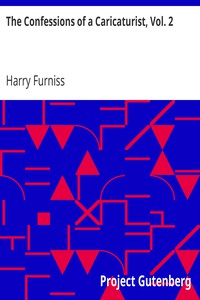

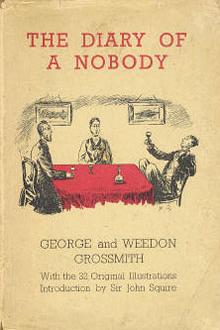
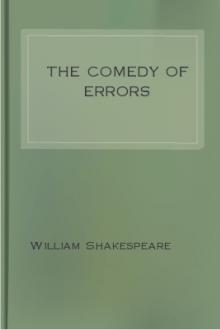
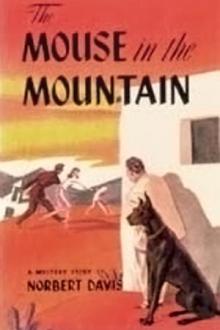
Comments (0)